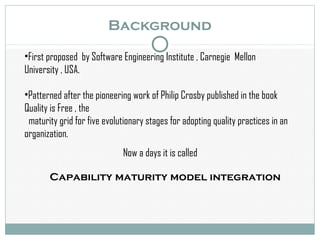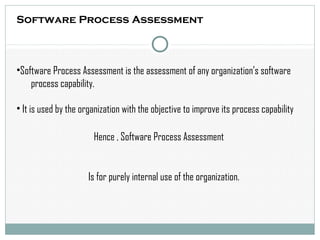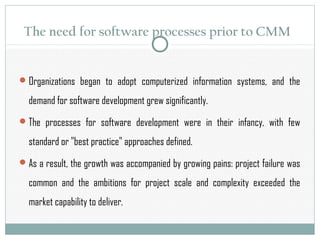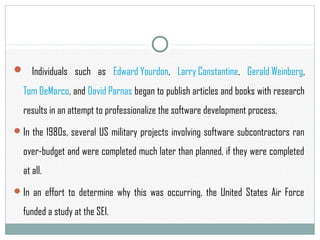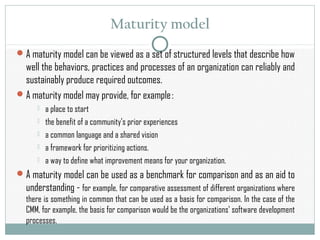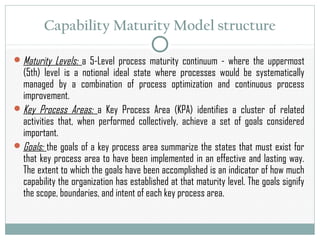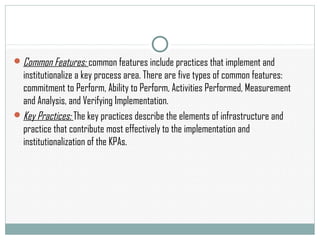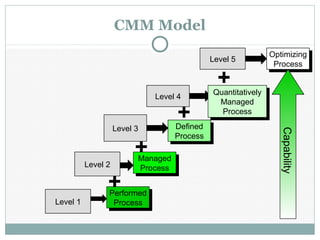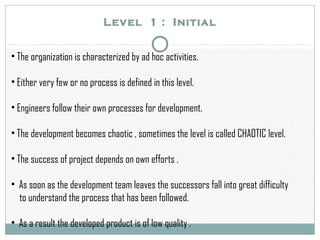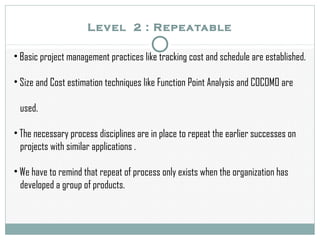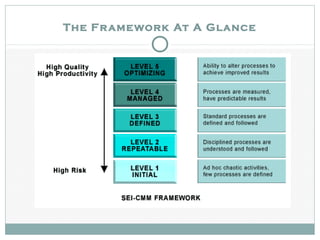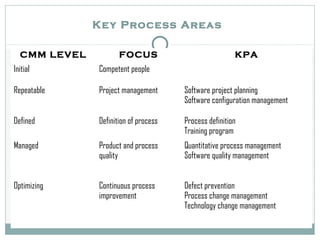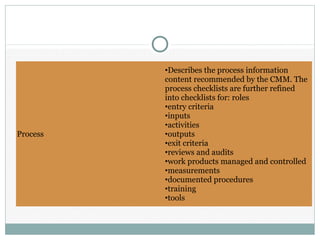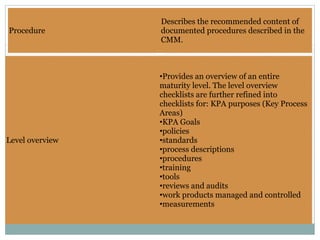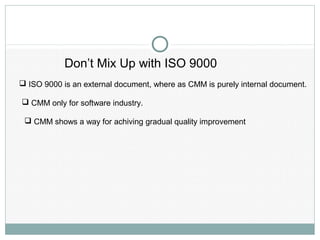The document provides an overview of the Capability Maturity Model (CMM) developed by the Software Engineering Institute. It describes the five maturity levels of the CMM from Initial to Optimizing. At each level, it focuses on key process areas and defines goals, standards, policies, and procedures. The CMM was created to help organizations improve their software development process and predict project outcomes. It has become an important framework for assessing an organization's software engineering process and capabilities.


